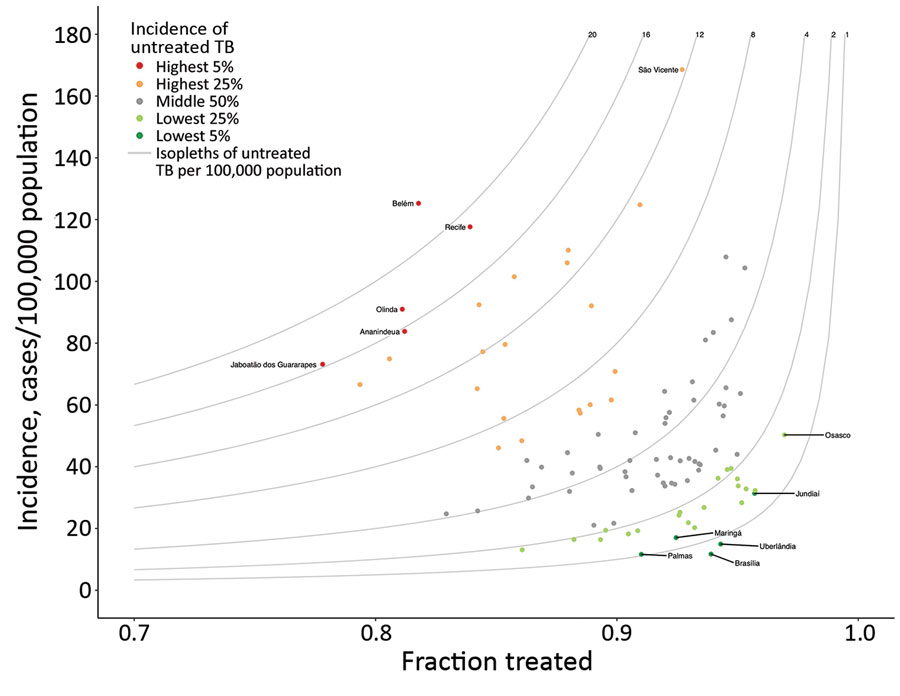Volume 27, Number 3—March 2021
Dispatch
Trends in Untreated Tuberculosis in Large Municipalities, Brazil, 2008–2017
Figure 1

Figure 1. Modeled tuberculosis (TB) burden in 101 largest municipalities and state capitals of Brazil, 2017. Gray curves indicate isopleths of untreated TB incidence × (1 − fraction treated). Municipalities in the 5th and 95th percentiles of untreated TB, as well as those with the highest incidence (São Vicente) and highest fraction treated (Osasco), are labeled.
Page created: January 20, 2021
Page updated: February 21, 2021
Page reviewed: February 21, 2021
The conclusions, findings, and opinions expressed by authors contributing to this journal do not necessarily reflect the official position of the U.S. Department of Health and Human Services, the Public Health Service, the Centers for Disease Control and Prevention, or the authors' affiliated institutions. Use of trade names is for identification only and does not imply endorsement by any of the groups named above.